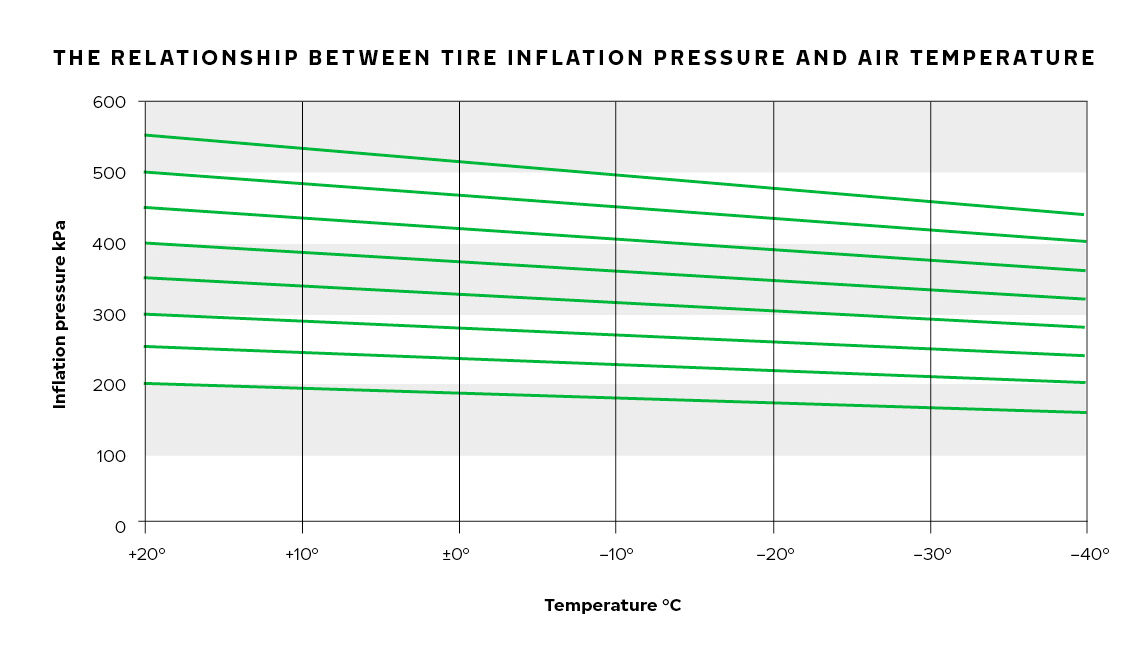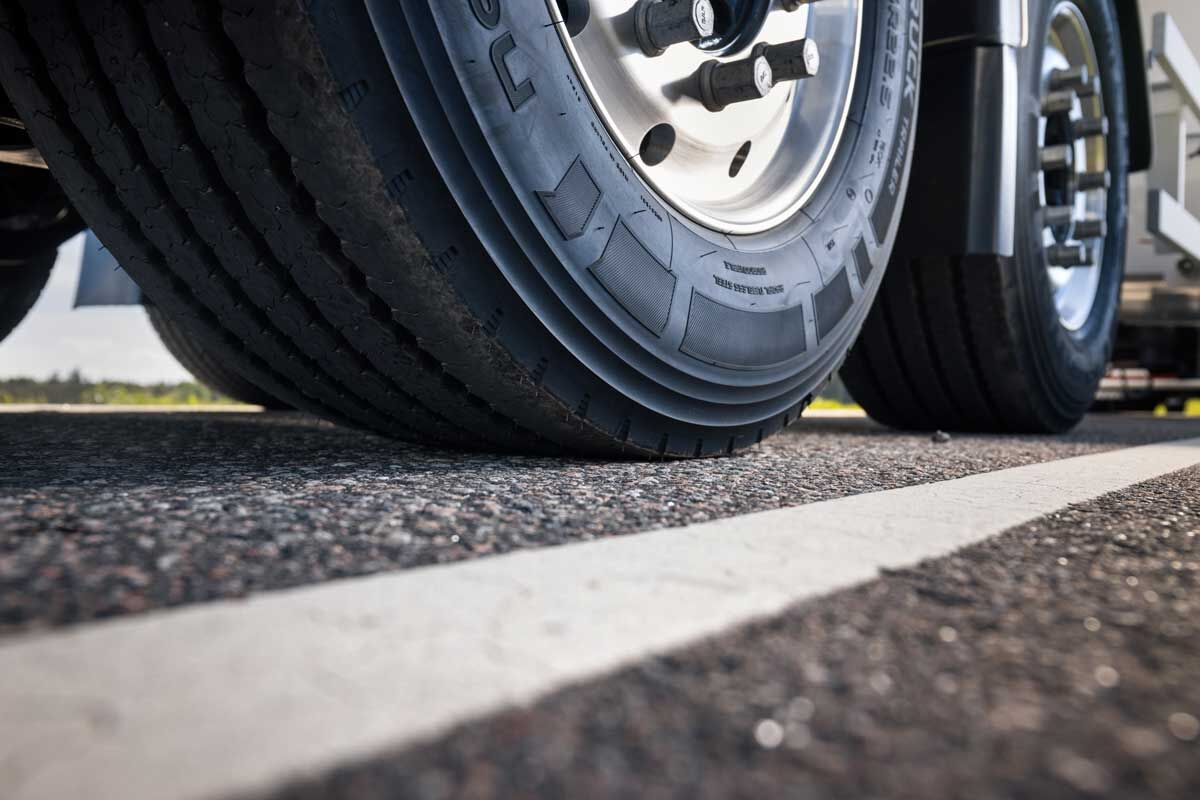
Determining the correct tractor tire pressure and checking it regularly is crucial for getting the best possible performance from your tires – and your tractor. Appropriate tire pressures for the type of heavy equipment, work, and conditions ensure good performance, safety, and fuel efficiency.
Even a small leak can cause the pressure to plummet and reduce the tire’s load capacity. This can result in severe damage to the tire.
Choosing the correct tire pressures for your tractor
The optimal tire pressure is essential for the best possible performance of your tractor and its tires. Correct tractor tire minimum pressure according to speed and load ensures the safety and grip of your tires while preventing excessive heat buildup and uneven or premature tire wear.
Using the correct tire pressure not only keeps your tractor tires in great condition, but also improves the overall performance of your tractor. The primary benefits of correct tractor tire pressure are:
- Improved traction
- Fuel efficiency
- Improved handling and stability
- Safety
Each tire axle of your tractor requires optimal pressure in different situations, so there is no one-size-fits-all solution for tractor tire pressures. This is why we created the Nokian Heavy Tyres technical manual with a chart for each heavy tire's speed, pressure, and load-bearing capacity. Use the tire pressure charts to help you set the correct tire pressure. It is important to keep the tires inflated to at least the minimum pressure given in the charts.
Longer-lasting tractor tires with proper air pressure
When inflating your tractor tires, there is certainly the danger of going too high or low, as both over-inflation and under-inflation can have undesired consequences – both for your tires and tractor.
Driving with over- or under-inflated tractor tires is not optimal when it comes to safety, the longevity of tires, and performance on the farm and in on-road use.
Some consequences of under-inflation include poor stability, difficulties in handling the vehicle, and overheating. As the tire constantly overheats, the structure ages faster, leading to shorter service life for the tire. Poor stability and handling become more apparent at higher speeds. This also reduces the performance of your tractor and increases the likelihood of damage.
Maintaining the right tire pressure and avoiding over and under-inflation can prevent these issues and ensure optimal performance and long tire life.
Check the tire pressure on a cold tire
Cold weather influences tire inflation and the right tire pressure to use: when temperatures decrease, so does the tire pressure. Therefore, you should carefully consider tire inflation in cold temperatures and go slightly higher than the recommended tire pressure.
As a rule of thumb, a change of 30 degrees Celsius in temperature corresponds to 0,5 bar in tire pressure.
Make sure not to adjust tire pressures in the middle of the day. Instead, check tire pressures when the tires are cold, for example in the morning before driving to work. Also, adjust inflation pressures when changing the implements of your tractor.
Make sure to increase tire pressure in these instances:
- During road transits. Higher inflation pressure improves the durability of the tire pattern and structure in on-road use.
- When you require more balanced handling from the tractor.
- When working with a front loader.
Read more from the Nokian Heavy Tyres technical manual. Use the following diagram to assess the appropriate level of tractor tire inflation when temperatures drop.

Please remember that it is the driver’s responsibility to ensure their tires are safe and suitable for their vehicle and to follow the vehicle’s manufacturer´s guidelines for proper use and maintenance. Consult your closest Nokian Tyres dealer or your vehicle’s manufacturer for specific advice.


